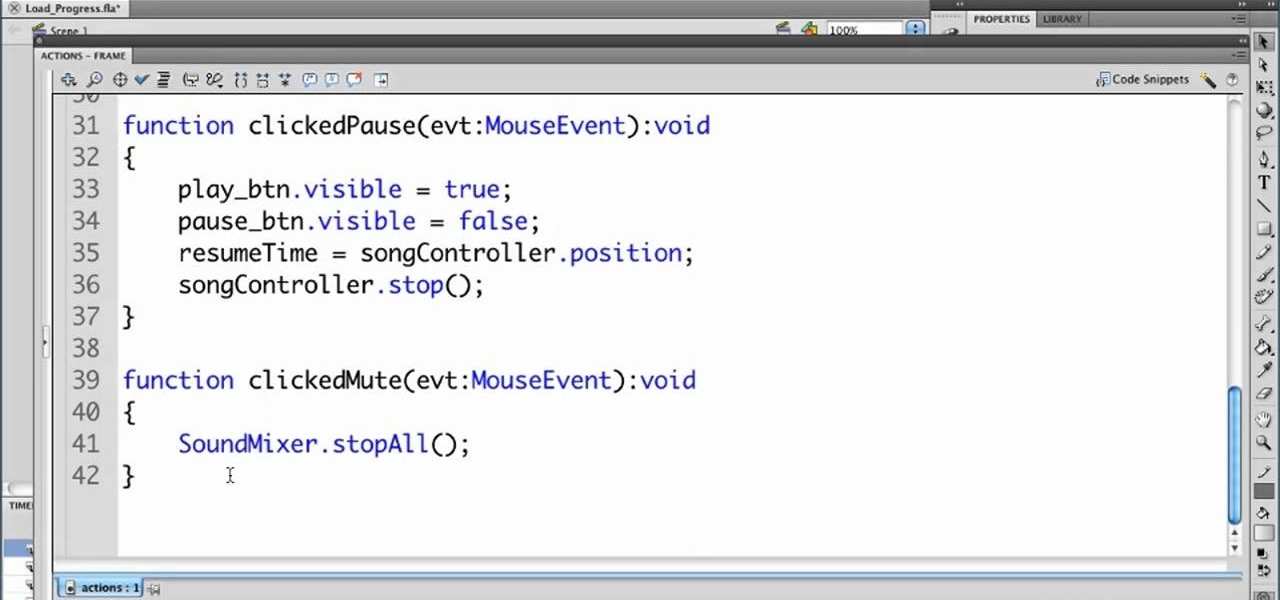Adobe Systems Adobe Actionscript
- Adobe Systems Adobe Actionscript
- Adobe Actionscript 3.0
- Adobe Systems Adobe Actionscript Free
- Adobe Systems Adobe Actionscript Player
Whenever possible, put your ActionScript® in a single location. Organizing your code in one place helps you edit projects more efficiently, because you can avoid searching in different places when you debug or modify the ActionScript. If you put code in a FLA file, put ActionScript on Frame 1 or Frame 2 in a layer called actions on the topmost layer in the Timeline. Alternatively, you might put all of your code in ActionScript files. Some Animate applications do not always put all code in a single place (in particular, ActionScript 2.0-based applications that use screens or behaviors).
You can usually put all your code in the same location (on a frame, or in ActionScript files), with the following advantages:
The suit alleged that Adobe has violated federal and state antitrust laws by abusing its dominant position in the professional vector graphic illustration software market and that Adobe has engaged in a series of exclusionary and anti-competitive acts and strategies designed to kill FreeHand, the dominant competitor to Adobe's Illustrator. The ActionScript XMP Library is intended to be used with Adobe Flash and Flex technology, to read, modify and create XMP packets in the RDF/XML format. Readers of this document should be familiar with the XMP Technology. ActionScript ® 3.0 Reference for the Adobe ® Flash ® Platform Home Show Packages and Classes List Hide Packages and Classes List Packages Classes What's New Index Appendixes.
Code is easy to find in a potentially complex sourcefile.
Code is easy to debug.
Avoid attaching ActionScript to objectsin a FLA file, even in simple SWF files. (Only ActionScript 1.0and 2.0. can be attached to objects; ActionScript 3.0 cannot.) Attachingcode to an object means that you select a movie clip, component,or button instance; open the Actions panel; and add ActionScript usingthe on() or onClipEvent() handlerfunctions.
Attaching ActionScript code to objects is strongly discouragedfor the following reasons:
It is difficult to locate, and the FLA files are difficultto edit.
It is difficult to debug.
ActionScript that is written on the timeline or in classesis more elegant and easier to build upon.
It encourages poor coding style.
The contrast between two styles of coding can be confusingto people learning ActionScript; it forces students and readersto learn different coding styles, additional syntax, and a poorand limited coding style.
Avoid attaching ActionScript 2.0to a button called myButton_btn, which looks likethe following:
on (release) { //do something }However, placing ActionScript 2.0 with the samepurpose on the timeline (which is encouraged), looks like the followingcode:
myButton_btn.onRelease = function() { //do something };note: Different practices apply when using behaviors,which sometimes involves attaching code to objects.
More like this
Twitter™ and Facebook posts are not covered under the terms of Creative Commons.
Legal Notices Online Privacy Policy
When you create a new FLA document, Animate (formerly Animate) asks you which version of ActionScript you want to use. You can change this setting if you decide later to write your scripts in a different version of ActionScript.
Adobe Systems Adobe Actionscript
Note:
ActionScript3.0 is not compatible with ActionScript 2.0. The ActionScript 2.0 compilercan compile all ActionScript 1.0 code, except for the slash (/)syntax used to indicate movie clip paths (for example, parentClip/testMC:varName= 'hello world').To avoid this problem, either rewrite your code using dot (.) notation,or select the ActionScript 1.0 compiler.
- Select the ActionScript version from the Script menu.
When you install Animate, several ActionScript-related configuration folders and files are placed on your system. If you modify these files to customize the authoring environment, back up the original files.
Contains all of the built-in ActionScript 2.0 classes (AS files). Typical paths to this folder are as follows:
Windows 7 and 8: Hard DiskProgram FilesAdobeAdobe AnimateCommonConfigurationActionScript 3.0ConfigurationClasses
Macintosh: Hard Disk/Users/user/Library/Application Support/Adobe/Animate/language/Configuration/Classes
The Classes folder is organized into classes for Flash Player 10 and classes for Flash Player 11. For more information on the organization of this directory, see the Read Me file in the Classes folder.
Contains all of the global ActionScript include files. Locations are as follows:
The configuration file for ActionScript code color syntax highlighting. Locations are as follows:

You can also enter the Document Class informationin the Publish Settings dialog box.

You can set the following ActionScript locations in Animate:
Note: ActionScript 2.0 is deprecated with Animate. For more information, see this article
To set the document-level classpath:
To set the document-level Library path, theprocedure is similar to setting the Source path:
To define a config constant using the Publish Settings dialogbox:
Windows xp pro updates downloads. You May Also Like: How To Install Windows XP 64 Bit ISO ImageAfter you successfully downloaded windows XP 64 Bit ISO file. The steps to install windows XP are simple and easy. Follow this tutorial which tells How to install Windows XP (SP3) via USB Drive. You can obtain Windows XP SP3 from Windows Update, at http://update.microsoft.com. Save it on your PC.
Adobe Actionscript 3.0
Remember the following conditions when creating custom contextmenu items for Flash Player:
You can specify the visibility and enabling of custom items.
Custom context menu items are automatically encoded usingUnicode UTF‑8 text encoding.
Configuration folders installed with Flash (CS5.5)
Adobe Systems Adobe Actionscript Free
Typicalpaths to the First Run folder are as follows:
In WindowsXP or Vista, browse to boot driveProgram FilesAdobeAdobe FlashCS3languageFirst Run.
On the Macintosh, browse to Macintosh HD/Applications/AdobeFlash CS3/First Run/.
Adobe Systems Adobe Actionscript Player
Twitter™ and Facebook posts are not covered under the terms of Creative Commons.